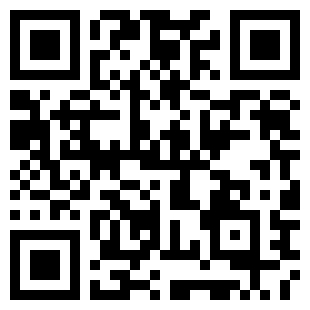n. A tag, such as a barcode, assigned to an object that, when scanned with a smartphone or reader, displays online data about the object.
2011
Although invented in Japan in the 1990s, QR codes are only just being used by UK businesses.
The code consists of black modules arranged in a square pattern on a white background.
When the encoded information is accessed via an app on a smartphone it is termed hardlinking or object hyperlinking.
The code consists of black modules arranged in a square pattern on a white background.
When the encoded information is accessed via an app on a smartphone it is termed hardlinking or object hyperlinking.
2011
The key difference between the two dimensional QR code and the single dimensional barcode is the amount of data they contain. Quick Response codes are also known as hardlinks or physical world hyperlinks. QR Codes store up to 4,296 alphanumeric characters of arbitrary text. This text can be anything, for example, a URL, contact information, a telephone number, even a blog post!
2007 (earliest)
The simplicity of linking from the physical world into the electronic world, known as 'physical world hyperlinks' or a 'hardlink' is the essence of the QR code and explains its enormous popularity.
A hardlink is also known as a physical world hyperlink or an object hyperlink. The term originally referred to an alphanumeric code associated with an object that, when entered into a browser, would look up the code in a special database and take the browser to online information about the object. That sense dates to at least 2005, but it has been superseded by the above sense.

One of the most common hardlinks these days is the QR code (Quick Response code), which contains alphanumeric text (such as a web address) encoded in a graphical pattern. For example, the QR code on the right encodes the address of this page. Retailers and advertisers are using these codes in the real world (for example, on storefronts and in the pages of newspapers and magazines), and the idea is that we are supposed to use QR code-reading apps on our smartphones to scan these codes and link to information about the retailer or product. (Meta project idea: Print out the QR code on the right and then scan it to hardlink to a page devoted to hardlinking.)

One of the most common hardlinks these days is the QR code (Quick Response code), which contains alphanumeric text (such as a web address) encoded in a graphical pattern. For example, the QR code on the right encodes the address of this page. Retailers and advertisers are using these codes in the real world (for example, on storefronts and in the pages of newspapers and magazines), and the idea is that we are supposed to use QR code-reading apps on our smartphones to scan these codes and link to information about the retailer or product. (Meta project idea: Print out the QR code on the right and then scan it to hardlink to a page devoted to hardlinking.)
